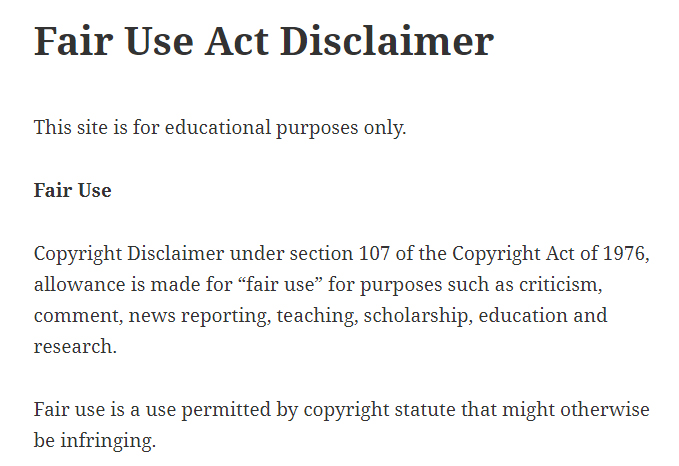Adobe Stock is a platform that provides users access to millions of high-quality images, videos, templates, and 3D assets for creative projects. It is crucial for users to understand copyright laws and fair use policies when utilizing stock images to avoid legal complications and respect the rights of creators.
What is Adobe Stock and How Does It Work

Adobe Stock is an online marketplace that offers a vast library of creative assets for purchase or subscription. Users can browse through various categories, including photography, illustrations, and videos. The platform allows creatives to license content easily, making it accessible for both personal and commercial projects. Once users find the desired asset, they can choose from different licensing options depending on their needs.
Adobe Stock operates on a straightforward process: users can search for assets, preview them, and purchase licenses either as individual downloads or through subscription plans that provide a certain number of downloads per month. The license acquired typically grants rights for commercial use, though it may come with limitations, such as restrictions on reselling or redistribution of the images or videos in a way that competes with Adobe Stock itself.
The Importance of Copyright in Stock Images
Copyright is a legal protection granted to creators of original works, including stock images. Understanding copyright is essential for anyone using stock images, as it ensures the rights of creators are respected. Using copyrighted material without proper authorization can lead to legal repercussions, including lawsuits and financial penalties.
In the context of stock images, purchasing a license from Adobe Stock provides users with the right to utilize the images while still acknowledging the creator’s rights. This legal framework protects both the user and the original creator by defining how the images can be used and ensuring that creators receive compensation for their work.
Furthermore, having a solid grasp of copyright helps users navigate the potential pitfalls of fair use. While fair use allows limited use of copyrighted material without permission for purposes like criticism, comment, news reporting, teaching, or scholarship, it does not apply broadly to stock images. Therefore, it’s wiser to opt for legally licensed content from Adobe Stock to avoid any infringement risks.
Overview of Adobe Stock’s Copyright Policies
Understanding Adobe Stock‘s copyright policies is crucial for anyone looking to use stock images responsibly. Adobe Stock provides a vast library of high-quality images, videos, and other assets, but you need to adhere to their copyright agreements to avoid any legal issues. Here’s what you should know:
- Licensing Types: Adobe Stock offers two main types of licenses: Standard and Extended. The Standard license is sufficient for most personal or commercial projects, but if you’re planning to use the image in merchandise or want to incorporate it in a product for resale, you’ll need the Extended license.
- Rights to Use: With a Standard license, you can use the assets in various ways—including websites, marketing materials, or social media. However, there are restrictions; for example, you can’t use these images in a template for resale or in a product meant for distribution.
- Attribution: Unlike some stock image services, Adobe Stock does not require attribution for images used under their licensing. However, it’s always good practice to credit when possible, especially in creative fields.
- Prohibited Uses: You cannot use Adobe Stock images for any unlawful purposes, promote defamatory content, or imply an endorsement by the person or brand featured in the image.
Overall, it’s essential to read and understand Adobe Stock‘s licensing terms before using any assets. Taking the time to familiarize yourself with their policies helps protect you and ensures you’re using images ethically and legally.
Fair Use Explained in the Context of Stock Images
Now, let’s talk about fair use and how it applies to stock images. Fair use can be a bit of a gray area, but it’s essential to know when you might rely on it. In general, fair use allows limited use of copyrighted material without permission from the copyright owner under certain circumstances. Here’s how it breaks down:
- Purpose of Use: Fair use is more likely to be applicable for educational, transformative, or non-commercial purposes. For instance, using an image in a critique, commentary, or parody might qualify.
- Amount Used: Using a small portion of a stock image could fall under fair use, but the less you use, the better. Generally, using an entire image makes fair use harder to argue.
- Market Impact: If your use of the image potentially affects its market value, fair use is less likely to apply. For example, sharing a stock image for free that’s typically sold can harm the original creator’s ability to earn revenue from their work.
The takeaway? While fair use may allow for some flexibility, it’s risky to rely on it with stock images. Always consider licensing agreements and when in doubt, it’s best to seek permission or purchase the appropriate license. When dealing with stock images, understanding your rights and obligations can save you a lot of trouble in the long run!
How to Properly Attribute Adobe Stock Images
When using Adobe Stock images, proper attribution is crucial to respect the rights of the image creators and comply with copyright regulations. While Adobe Stock generally offers images with a royalty-free license, providing credit can still be considered good practice, especially if the license specifies it. Here’s how to do it properly:
- Check the License: Always review the terms associated with the specific image you’re using. Some images may require attribution, while others do not.
- Include Creator Information: If attribution is needed, mention the creator’s name alongside the image.
- Link Back to the Source: Providing a hyperlink to the image on Adobe Stock can enhance the credit, enabling others to view or purchase the image themselves.
- Placement Matters: Place the attribution either directly beneath the image or in an acknowledgments section of your work, making it clear and accessible.
For example, an attribution might look something like this:
Image by [Photographer’s Name] from Adobe Stock
By adhering to these guidelines, not only do you show respect for the creators, but you also help maintain the integrity of the creative community. Remember, when in doubt, always refer back to Adobe’s guidelines and terms for each specific image.
Common Misconceptions About Copyright and Fair Use
Copyright law can be a complex topic, leading to several misconceptions, especially regarding fair use. Let’s clear up a few of the most common myths:
| Myth | Reality |
|---|---|
| All Images on the Internet are Free to Use | Not true. Just because an image is available online does not mean it can be used freely without permission. |
| Attribution Means You Can Use Anything | Attributing a work does not grant you permission to use copyrighted material unless it’s explicitly labeled for reuse. |
| Fair Use is a Clear-Cut Policy | Fair use is subjective and can vary based on several factors, including the purpose of use, amount used, and the effect on the market value of the original work. |
| Using Images for Education Always Qualifies as Fair Use | While education can be a factor, it does not automatically guarantee fair use; context always matters. |
Debunking these myths is crucial for anyone navigating the world of copyright and stock images. Always approach with caution and respect copyright laws to protect yourself and support creators. When in doubt, consider getting professional legal advice or consulting Adobe’s resources for further clarity.
Best Practices for Using Adobe Stock Images Legally
Using Adobe Stock images can elevate your projects, but it’s vital to follow best practices to ensure you’re using these assets legally. Here’s a handy guide to help you navigate copyright considerations:
- Read the License Agreement: Always familiarize yourself with the specific licensing terms associated with each image before you download it. Adobe Stock offers different types of licenses, including standard and extended, and understanding these can prevent legal issues.
- Creative Commons vs. Adobe Stock: Remember that images from Adobe Stock are not the same as those with Creative Commons licenses. Unlike some Creative Commons images, Adobe Stock images usually require a fee and specific usage rights.
- Avoid Misuse: Don’t use Adobe Stock images in a way that could suggest endorsement by the subjects or brands depicted unless you have the appropriate rights. Misleading representations can lead to legal trouble.
- Keep Records: Maintain a record of your image downloads, licenses, and usages. This can be invaluable if you ever need to prove you have used the images correctly.
- Be Cautious with Modifications: While some images can be modified, know your limits. Certain images might prohibit alterations, so review the license specifics to avoid issues.
By following these best practices, you can enjoy the vast array of Adobe Stock images while remaining compliant with copyright laws and regulations. Happy designing!
Consequences of Copyright Infringement on Adobe Stock
Using images without proper licensing from Adobe Stock can have serious consequences. Understanding these repercussions can motivate you to adhere to copyright laws:
- Legal Action: Adobe Stock holds the right to take legal action against individuals or entities that misuse their images. This could lead to costly lawsuits, including damages and attorney fees.
- Financial Penalties: Infringers can face hefty fines. The cost of using an image improperly can far exceed the price of licensing it legally, creating unnecessary financial stress.
- Loss of Reputation: Being caught in a copyright infringement can tarnish your professional reputation. Clients and partners may think twice before working with someone who doesn’t respect intellectual property.
- Account Suspension: Adobe Stock can suspend or terminate your account if it finds a pattern of violations, leaving you without access to the resources you rely on.
- Ethical Considerations: Beyond legalities, using someone else’s work without permission is unethical. It undermines the integrity of creators and the industry as a whole.
Avoid these pitfalls by always ensuring that you are in compliance with Adobe Stock’s copyright policies, and invest in the creativity and hard work of others legally and ethically.
Frequently Asked Questions about Adobe Stock’s Policies
Adobe Stock is a popular platform for creatives seeking high-quality images, videos, and templates. However, understanding the copyright and fair use policies related to Adobe Stock content is crucial for adhering to legal norms. This post addresses some frequently asked questions concerning these policies.
1. What is Adobe Stock’s copyright policy?
Every asset available on Adobe Stock is protected by copyright. When you purchase or download content, you are granted a license to use it in a specific way, but the copyright remains with the creator. This means you cannot claim the work as your own or sell it without permission.
2. What types of licenses does Adobe Stock offer?
Adobe Stock provides two primary types of licenses:
- Standard License: Allows for use in most projects, including web and print media with some limitations on replication.
- Extended License: Provides broader usage rights, including the ability to use content in merchandise and for resale.
3. What is fair use, and how does it relate to Adobe Stock content?
Fair use permits limited use of copyrighted material without permission for specific purposes, such as criticism, comment, news reporting, teaching, and research. However, fair use is often murky and subjective, making it challenging to apply when using Adobe Stock content.
4. Can I modify Adobe Stock images?
Yes, you can edit and modify Adobe Stock images as long as you adhere to the terms of your license. However, make sure modifications do not infringe on the original copyright holder’s rights.
Conclusion
Understanding Adobe Stock’s copyright and fair use policies is essential for any creative professional. Familiarizing yourself with licensing types ensures that you use content legally while respecting the rights of creators.


